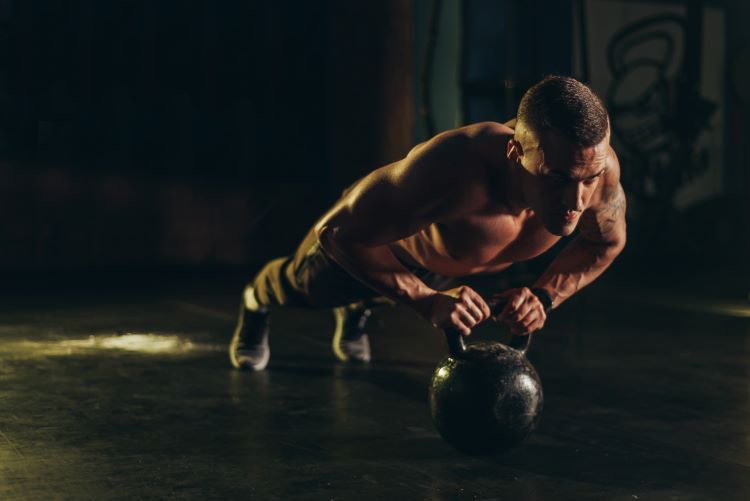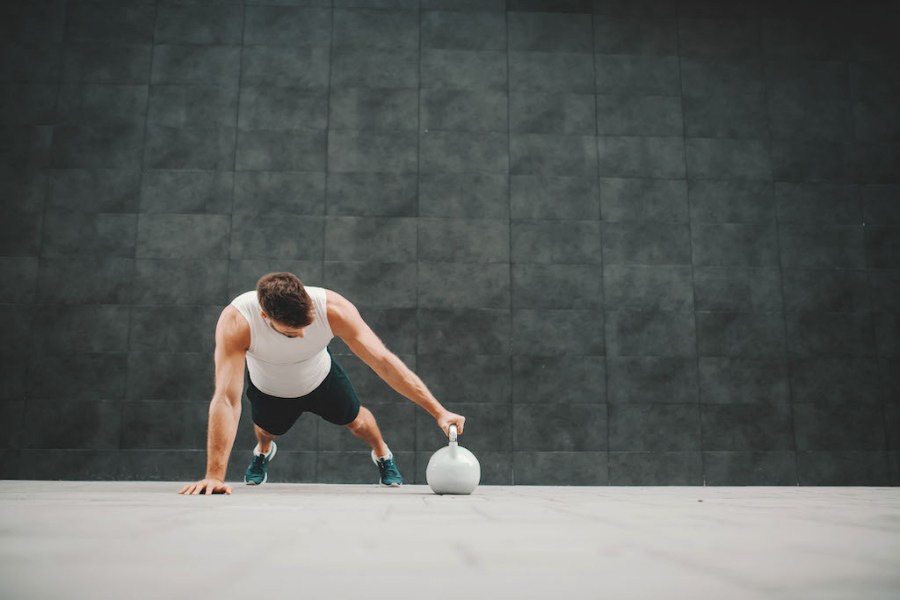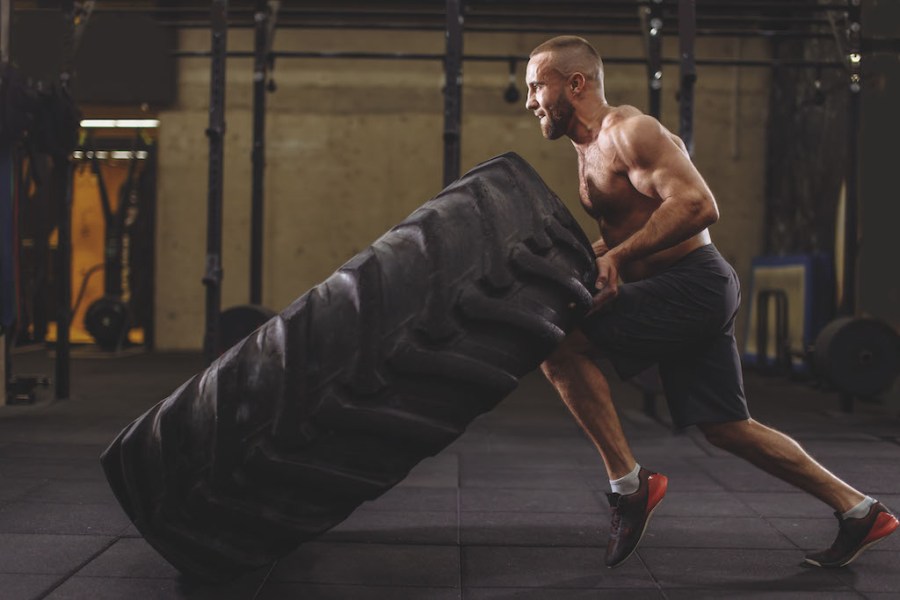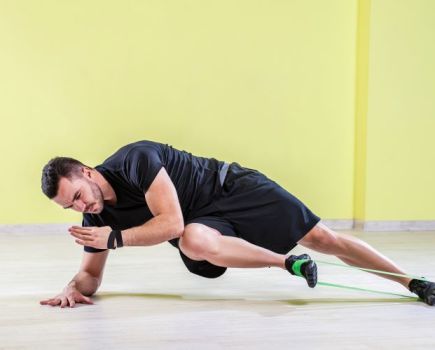From emphasising the eccentric to exposing yourself to heavier loads, we asked the experts for their tips on how to boost your strength in 2024…
Go to your local gym this January, find the heaviest dumbbell set on the rack and see how hard they are to pick up. Not a problem? Well then, you must be very strong already; no need to boost your strength…
While there would be some truth to that, if we were to take the dictionary definition of strength – ‘the ability to do things that demand physical effort’ – strength is about far more than just the weight you can lift.
How to boost your strength
To be the proud owner of a body that can be defined as truly strong demands – among many other attributes – balance, power, stability and resilience. After all, what’s the use of banging out a monster bench press if you then pull a hamstring with your first kick at five-a-side? Strength, in short, is all-encompassing.
“Along with cardiovascular fitness, mobility, body composition, and emotional wellbeing, it’s one of the five measurable pillars of wellness,” says authority on the matter Luke Worthington. “But it’s arguably the most important, because it’s the one that underpins and feeds into each of the others.”
Improving your strength won’t only aid your performance in the gym: it will also massively benefit long-term health and everyday life.
“A strong body is a resilient body,” concludes The Movement Blueprint’s Harvey Lawton, “and one that will serve you well long into the future.”
To help you not only lift heavier, but perform better and stay fit and healthy for longer, we asked our five-strong team of strength specialists for their best tried-and-tested get-strong strategies.
Here’s what they came up with…
Meet the experts
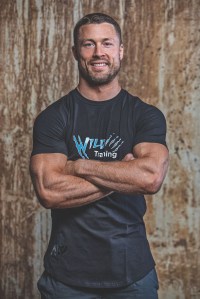
James Griffiths (JG)
‘A life with no limits’ is Wild Training founder and regular MF columnist James Griffiths’ creed. He’s recorded the highest altitude workout ever, completed 1,000 24kg kettlebell snatches in under one hour, and was Southern England’s strongest man under 80kg in 2018.

Luke Worthington (LW)
A world-renowned personal trainer with a roster of celebrity clients, Luke Worthington has over 20 years’ industry experience. As well as being a qualified sports scientist and trainer, he holds qualifications in neuroscience and biomechanics.
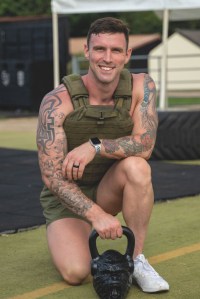
Farren Morgan (FM)
A serving soldier in the British Army, Farren Morgan creates ‘Tactical Training’ programmes with the aim of pushing people out of their comfort zones and giving ‘civilians’ a taste of military conditioning.
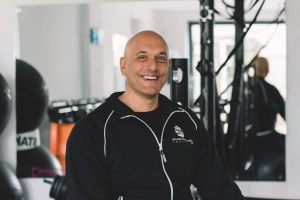
Nolan Sunnassee (NS)
An internationally educated PT with over 15 years’ experience, Nolan Sunnassee is an Olympic-level strength coach and strength consultant for Ipswich Town FC.
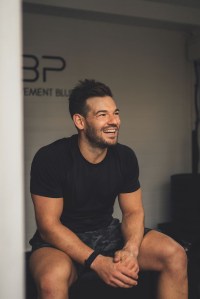
Harvey Lawton (HL)
The Movement Blueprint founder Harvey Lawton learned about elite performance during his days as a rugby player. He’s turned that knowledge into bridging the gap between athletes and everyday exercisers, helping the latter get fit for purpose and achieve their performance goals.
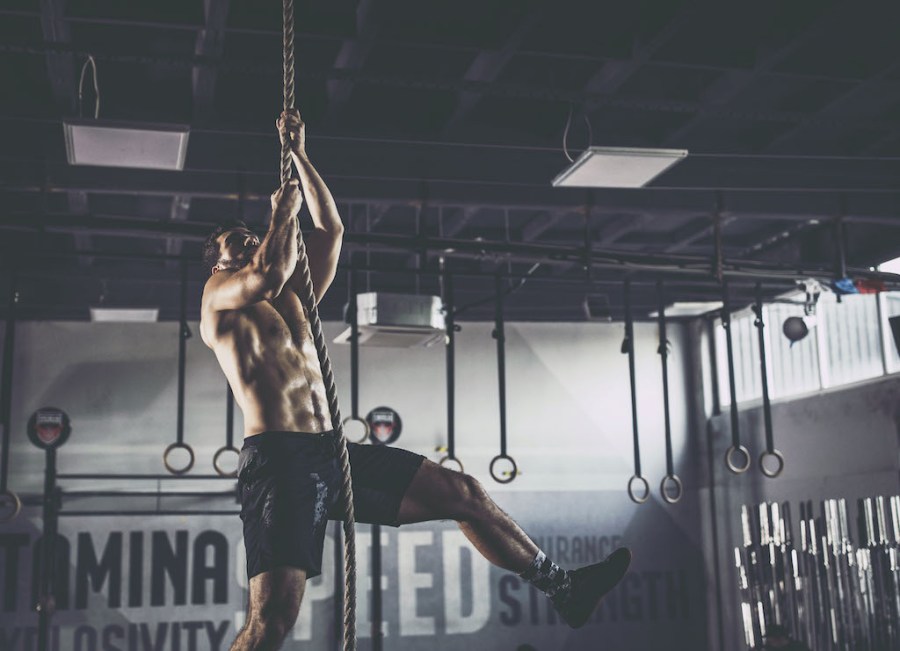
Mix up your training to grab the ‘low-hanging’ gains | Photography: Getty Images
Boost your strength: create chaos
JG: So often when we think of strength training, we think of traditional weight lifting in the gym. It’s clinical, and often the focus is on training within perfect form. But life doesn’t happen in perfect form.
That’s why I love making sure there is an element of chaos to my strength. Strength-oriented sports like rock climbing, grappling-based martial arts, and watersports like wakeboarding will help you develop the kind of strength you won’t find by just lifting weights in the gym.
Related: Best dumbbell exercises for every body part
Slow down
LW: To improve strength you need to apply the principle of progressive overload, which means needing to apply greater levels of force over time. The most obvious way to create progressive overload is by adding more weight. But it’s not the only way. At some point you will always reach an upper limit of how much weight can be physically moved.
Being smarter in ways to create progressive overload and strength gains, rather than simply adding more plates to a bar, helps mitigate risks while keeping the rewards. One such method is by simply slowing a movement down.
Exercising more control over the weight, particularly during the eccentric (lowering) phase, will create more of a challenge and has been shown to elicit strength gains.
FM: No matter how strong you are, it’s possible to make exercises harder by performing them slower. It’s far better to get a full range of motion with a slow but controlled tempo than cutting short your range of motion by performing half reps quickly.
NS: Performing eccentric-focused weight training is an excellent way to quickly increase strength. Try to lower your weight for four seconds on each repetition.
Alternatively, you could do a week of super slow lowering of ten seconds deceleration per rep – much harder than you think.
HL: Loading the lengthening phase of a movement with intent is a heavily researched area of strength and conditioning. Eccentric muscle action is stronger and expends less energy – a higher force at a lower cost.
If you want to build strength within a movement, pay extra attention to this phase every rep.
Shift the balance
LW: Kettlebells are inherently less stable than dumbbells and barbells. That means they require more proprioceptive control to use them, as well as recruitment of the smaller stabiliser muscles.
Swapping a 20kg dumbbell for a 20kg kettlebell can produce strength gains, without the orthopaedic cost of adding extra load.
Think free
FM: It might sound obvious, but if you want to get stronger, endless high-intensity and cardio-dominant workouts won’t cut it. Yes, they will get you fitter and leaner, but for strength you need to add some more specific lifting to the mix.
Free weights should form the basis of your training (though machines have a place too), for the simple reason that they recruit more muscles and provide a greater bang-for-buck training effect.
Related: Why you should train with resistance machines
Feel the force
HL: When the body moves load, it seeks stability. In fact, we are constantly battling to maintain stable positions to allow our body to move.
When it comes to training and lifting weights, the higher the level of external stability, the greater the potential to produce force. Choosing movements that offer the best opportunity to produce force means more time achieving high-quality muscle contractions.
Integrating machine-based work (plate-loaded is best in my opinion), alongside exercises that in general have shorter ranges of motion, will allow you to lift more load.
For example, a box squat in place of a barbell back squat, or a floor press instead of a dumbbell bench press, will both offer greater loading potential. If the goal is to build strength, movements with these characteristics should form the majority of your strength exercises.
Boost your strength: develop core control
JG: Focus on developing your stability with core conditioning, functional strength and intramuscular coordination. That doesn’t mean heavy lifting or high-volume weight training, but how much force you can produce from an unstable platform.
The guys that can bench press the most don’t necessarily feel like the strongest guys on the rugby pitch. When you’re lying on a bench you have a solid platform to press against and can put out a huge amount of force.
If you stand up, the amount of force you can produce in a pushing movement will be dramatically less, especially if you haven’t worked on the stability and control throughout your body.
Get mechanical
LW: Changing the mechanics of a movement can give progressive overload without needing to add more weight.
For example, changing a reverse lunge to a forward lunge means you have to start to deal with deceleration, force absorption and then a change of direction, whereas force production is the only thing to worry about with the same weight in a reverse lunge.
Expose yourself
NS: You won’t get stronger without some exposure to heavier loads, but going from nothing to bench pressing 150kg isn’t easy, and your body probably won’t let you do that anyway. Breaking the lifting down in parts, and exposing heavy loads at different points, allows for your body to feel more secure at those different points.
For example, by putting 120% of your one-rep max on a bar, then simply unracking and holding it for ten seconds (without lowering) gets your body and nervous system used to the heavier load. (Always use a spotter when attempting to lift heavier weights.)
Set for success
FM: One way to shock the muscles more to achieve the best results is by switching up the type of sets you use. Drop sets, supersets, giant sets, complexes and compound sets are all effective strategies for forcing your muscles into growth.
Use shock tactics
FM: The body adapts quickly to its training environment, so if you do 5 sets of 8 every time you perform a particular exercise, you’ll get good at doing 5 sets of 8 and very little else.
One way to avoid that is by switching up how many reps you do per set. This is where progressive overloading comes in.
For the next workout, try lifting the same weight for more reps, for instance 4 sets of 10. For the next workout, you want to increase reps again while lifting the same weight – 3 sets of 12 reps, for instance. Then, you simply increase the weights, and follow the same principle in terms of sets and reps. Change things up to shock the muscles.
Fatten up
NS: Use fat bars or fat grips to stimulate weaker links. The muscles in your hands and forearms are smaller and weaker than in your shoulder and back.
By using bigger grips, you will recruit and train these muscles, with the effect that when you go back to your normal lifts – with regular grips – they will feel easier.
Boost your strength: embrace change
JG: Change your method. If you lift dumbbells and barbells, try strongman. If you do strongman, try Olympic rings. Or, if you use rings, try aerial silks. Such easy gains are to be had by trying something you aren’t practiced in.
Go grab the low-hanging fruit. You’ll be amazed at how different types of strength may transfer to help you progress your main focus in strength training.
HL: To increase strength and size, the body needs be given a whole host of stimuli to allow it to continually adapt and progress.
That includes a power stimulus: your ability to overcome resistance in the shortest period of time (e.g. jumps and power cleans for 1-3 reps); a speed stimulus: your ability to move lower load for speed, generating fast muscle contractions (e.g. sprinting and barbell cycling; and a strength stimulus: your ability to overcome resistance to lift weight for a given amount of time or number of reps (e.g. a 3 to 5 to 10-rep max).
NS: Increase instability by using earthquake bars, rhino flex bars or bamboo bars. Similar to using fat bars, these will stimulate the body to recruit different muscle fibre.
During the lifts, your actual loads might be lower, but when you switch back to a normal barbell it will be easier – especially good if you’ve hit a bit of a wall with your training.
Related: Best full body dumbbell workout to try at home
Think about it
NS: Visualisation is a powerful technique to improve your lifting. By thinking how the lift feels and how you are going to move it helps the brain reinforce and improve neural connections.
Close your eyes, imagine what the bar feels like and what your perfect movement would be. Repeat, and mentally add weight to your bar.
Enter the compound
HL: Multi-joint patterns yield more muscle contractions/co-contractions, therefore requiring higher levels of tension. Compound movements such as a heavy sled push/drag or a loaded carry will improve both strength and stability.
When integrated alongside more traditional compound movements such as the hinge, squat and lunge patterns – together with pull-ups and dips – they will give you a great framework to build power, strength and quality muscle tissue.
Create strong connections
NS: You are only as strong as your weakest link, and for weight lifting that’s especially true. Ensure you have a balanced body by working your neck extensors, lower trapezius, hips and so on.
Doing so will give you greater deceleration/counter force strength, which will also prevent injuries.
Prioritise perfect form
FM: True strength is about having complete mastery over the weight you’re lifting. If you’re not ‘owning’ the weight, all you’re really doing is recruiting the power of momentum. More importantly, poor form can lead to short-term injuries and long-term problems.
Leave your ego at the door and take technique seriously. If you’re not sure about a certain lift, consult a PT to help you nail the basic movement pattern.
Address your issues
NS: If you have an injury, sort it out. At some point it will come back to haunt you. So many people train around an injury or a site of pain, rather than rehabbing it correctly.
That is only a temporary measure, because as soon as it is stressed it will usually break or create bad movement patterns.
Related content:

